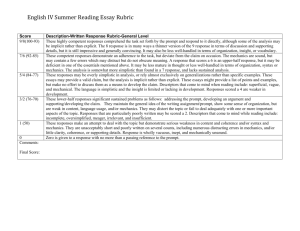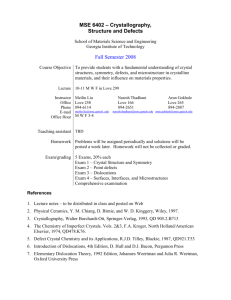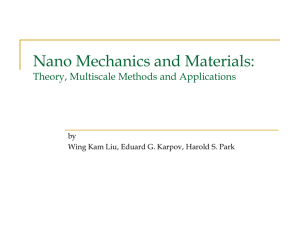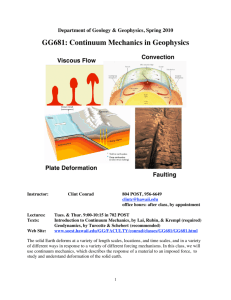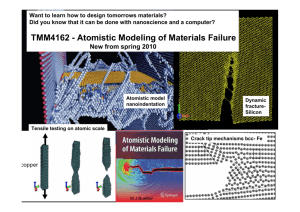MMSpreface
advertisement
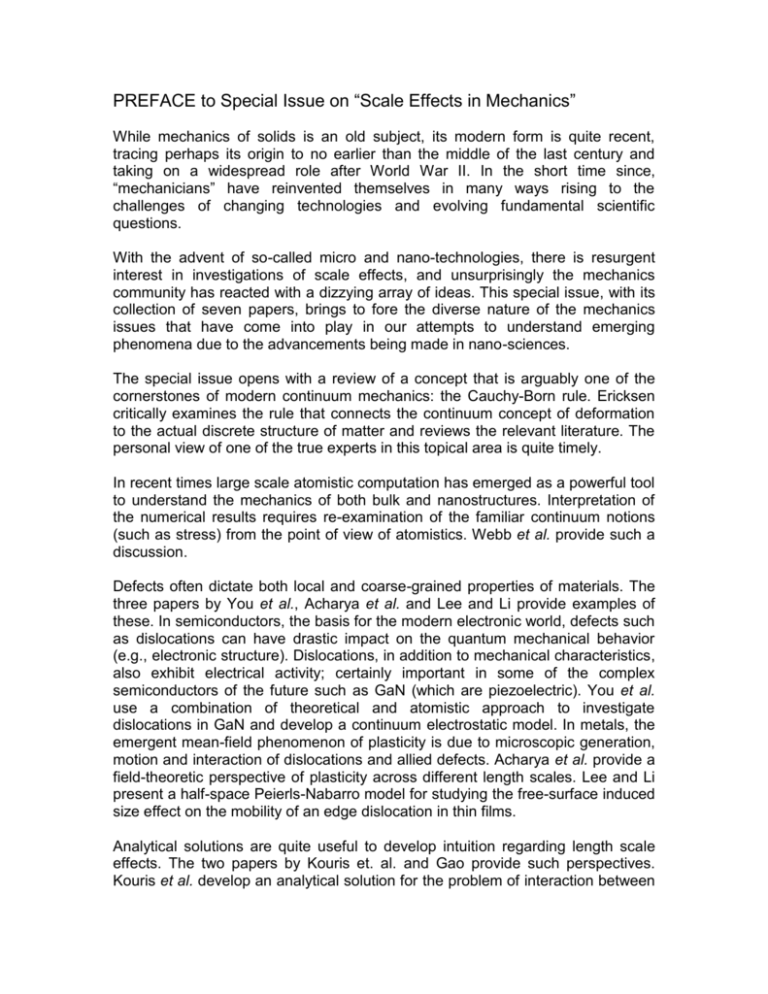
PREFACE to Special Issue on “Scale Effects in Mechanics” While mechanics of solids is an old subject, its modern form is quite recent, tracing perhaps its origin to no earlier than the middle of the last century and taking on a widespread role after World War II. In the short time since, “mechanicians” have reinvented themselves in many ways rising to the challenges of changing technologies and evolving fundamental scientific questions. With the advent of so-called micro and nano-technologies, there is resurgent interest in investigations of scale effects, and unsurprisingly the mechanics community has reacted with a dizzying array of ideas. This special issue, with its collection of seven papers, brings to fore the diverse nature of the mechanics issues that have come into play in our attempts to understand emerging phenomena due to the advancements being made in nano-sciences. The special issue opens with a review of a concept that is arguably one of the cornerstones of modern continuum mechanics: the Cauchy-Born rule. Ericksen critically examines the rule that connects the continuum concept of deformation to the actual discrete structure of matter and reviews the relevant literature. The personal view of one of the true experts in this topical area is quite timely. In recent times large scale atomistic computation has emerged as a powerful tool to understand the mechanics of both bulk and nanostructures. Interpretation of the numerical results requires re-examination of the familiar continuum notions (such as stress) from the point of view of atomistics. Webb et al. provide such a discussion. Defects often dictate both local and coarse-grained properties of materials. The three papers by You et al., Acharya et al. and Lee and Li provide examples of these. In semiconductors, the basis for the modern electronic world, defects such as dislocations can have drastic impact on the quantum mechanical behavior (e.g., electronic structure). Dislocations, in addition to mechanical characteristics, also exhibit electrical activity; certainly important in some of the complex semiconductors of the future such as GaN (which are piezoelectric). You et al. use a combination of theoretical and atomistic approach to investigate dislocations in GaN and develop a continuum electrostatic model. In metals, the emergent mean-field phenomenon of plasticity is due to microscopic generation, motion and interaction of dislocations and allied defects. Acharya et al. provide a field-theoretic perspective of plasticity across different length scales. Lee and Li present a half-space Peierls-Nabarro model for studying the free-surface induced size effect on the mobility of an edge dislocation in thin films. Analytical solutions are quite useful to develop intuition regarding length scale effects. The two papers by Kouris et. al. and Gao provide such perspectives. Kouris et al. develop an analytical solution for the problem of interaction between a surface step and an edge dislocation near the surface by using a perturbation method, the superposition principle and displacement potentials. Gao presents a solution to an important boundary value problem in size-dependent strain gradient plasticity viz. that of an embedded elastic spherical inclusion in a finite elastic-plastic matrix subjected to hydrostatic tension. Pradeep Sharma, University of Houston Xin-Lin Gao, Texas A&M University




